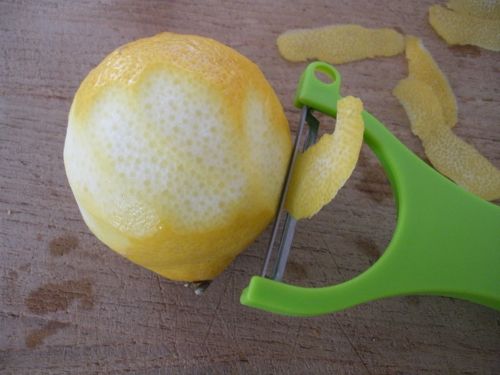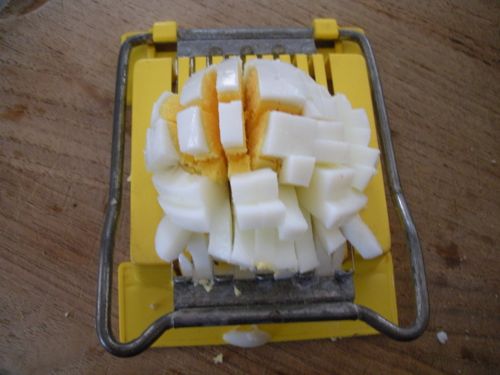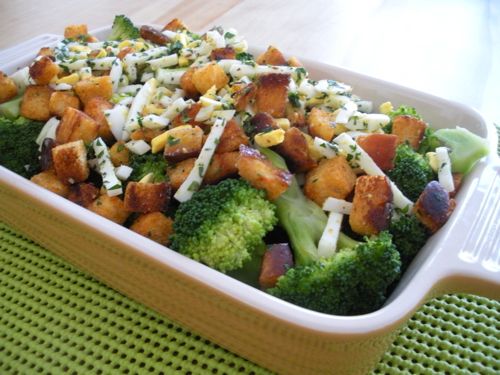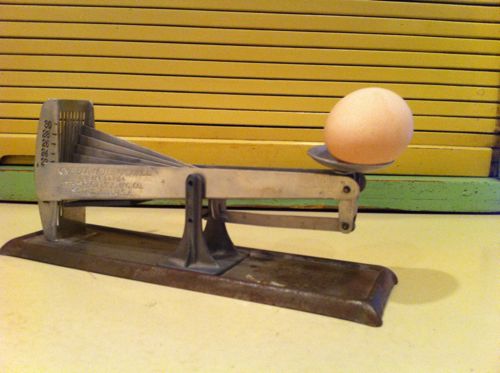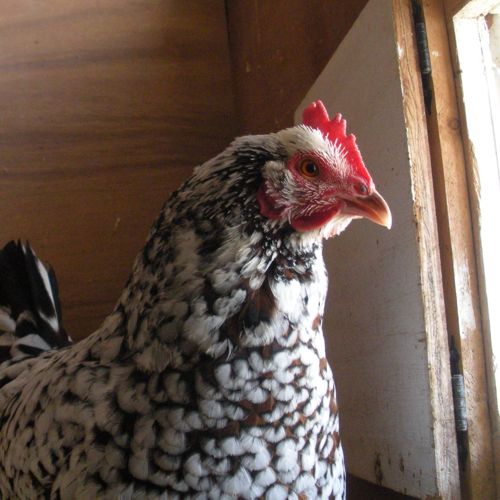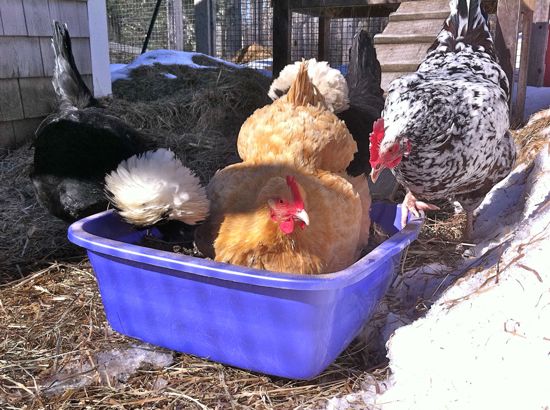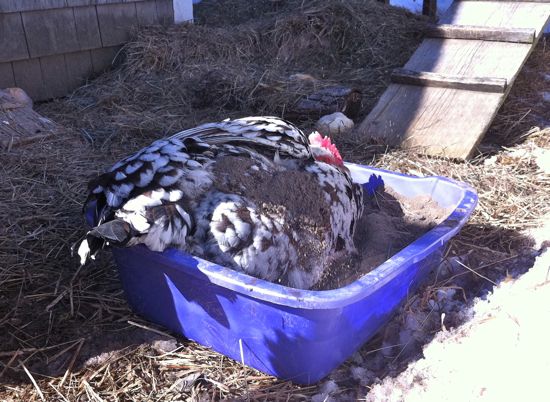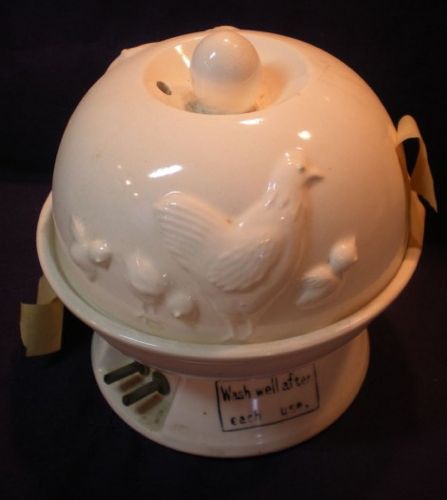What with all of the egg steaming and boiling, there’s been a bowl of hard-cooked eggs in my refrigerator to use. It’s far from home-grown vegetable season (more snow predicted for this weekend. Egads, I’ll never see my garden) but the broccoli from the supermarket has been very good this winter. After all of the soups and stews over the last few months, I’ve been craving light and bright and steamed. What I came up with was and egg and crouton mixture to top steamed vegetables. I can’t wait to use this on local asparagus, but for now, I’ll settle for broccoli.
Here’s a few cooking hints first:
Lemon zest lends a bright tang without sourness to recipes. The trick is to peel the lemon without getting any of the bitter white pith. You can use a zester or microplane grater, but I prefer to use a sharp peeler. See how clean the rind is? Then, use a chefs knife to mince the peel. When cooking with peel, always use organic citrus. The regular fruits are covered with wax that contain fungicides and other nasty ingredients that don’t wash off. If you have more peel than the recipe calls for, freeze it, and it will be perfect for muffins and other baking needs.
Mincing eggs with a knife sometimes yields whites with mashed yolks. Instead, use an egg slicer. Slice one direction, then turn the egg 90º and slice again. Voila! Minced eggs. If you want them finer, do again. (And, yes, for those of you who notice, this is a vintage egg slicer. I have a collection. Pink! Orange! Love those mid-century colors.)
Okay, here’s the recipe:
Chopped Eggs and Croutons for Vegetables
2 slices of bread, cut into cubes no larger than 1/4-inch
3 – 4 tablespoons extra virgin olive oil
1/2 teaspoon paprika
3 hard cooked eggs, minced
1/2 teaspoon salt
1/8 teaspoon freshly ground pepper
1/4 cup chopped fresh parsley
1 tablespoon minced organic lemon zest
lemon juice and extra virgin olive oil
3 cups steamed vegetables of choice
- Put the bread cubes on a sheet pan and place in a 350ºF oven for about five minutes, until dried out but not browned.
- Warm the oil in a skillet. Toss in the bread cubes and cook, tossing so all sides are coated with oil, until toasty and crunchy. Add the fourth tablespoon of oil if necessary – these should be crispy and brown. While toasting, dust on the paprika.
- When the croutons are done (this is only a matter of minutes) toss in the salt, pepper, parsley and lemon zest (if it’s all been measured out and waiting in one bowl, this goes smoothly and you won’t overcook the croutons.) Immediately put the croutons in to a bowl with the minced eggs. Stir in the salt and pepper.
- Whisk equal parts of lemon juice and olive oil. Toss in a bowl with the steamed vegetables. One lemon will yield about 1/4 cup of juice which is usually enough to coat the vegetables. You can steam the veggies ahead of time and this can be served cold like a salad, or, cook the broccoli right before service and serve warm as a side-dish.
- Place the vegetables on a serving plate and top with the egg and crouton mixture.
This photo is of my first test. The second time I made the croutons half that size and liked it better. But, it’s delicious either way!
